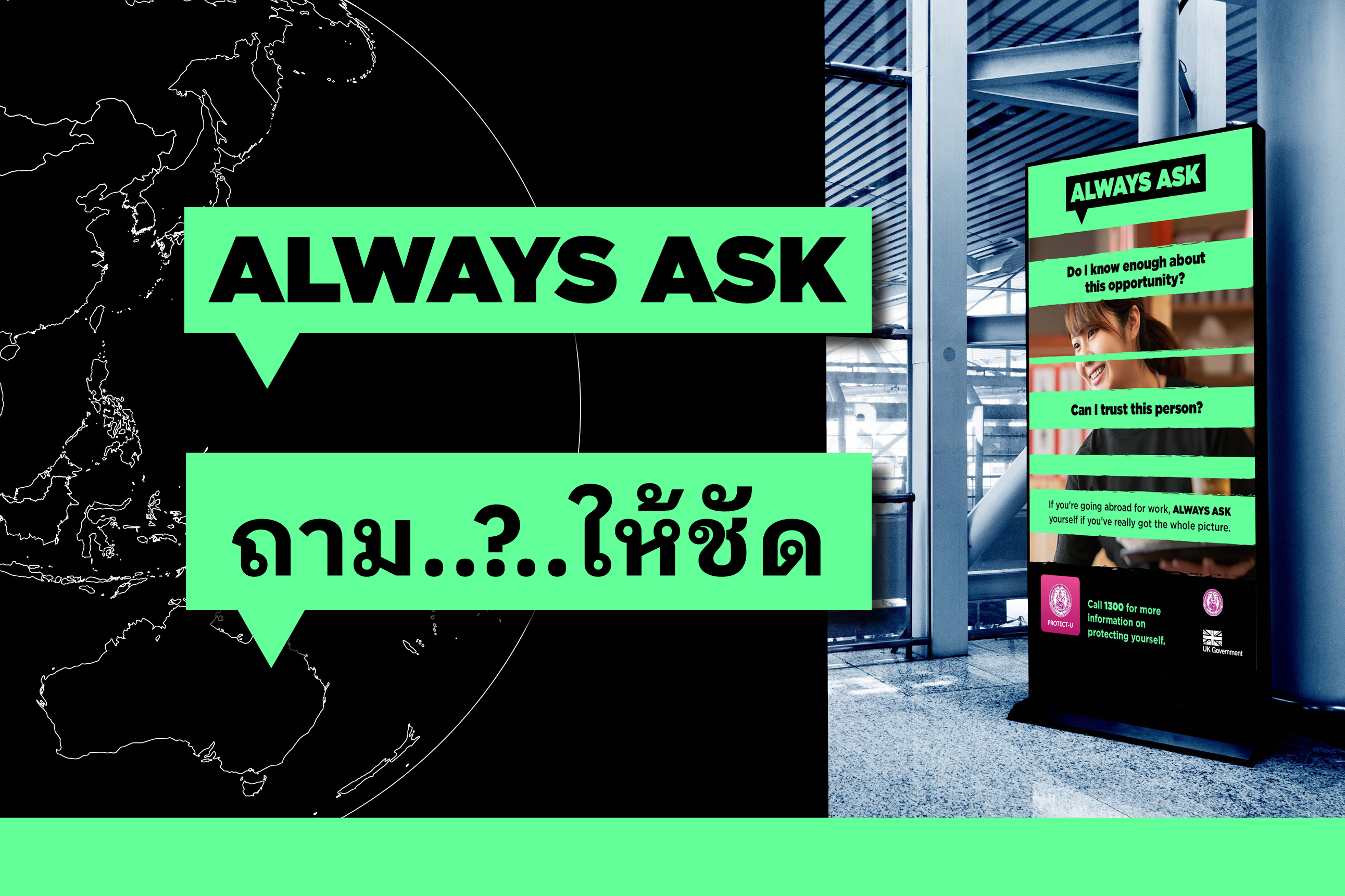
As government communicators, our role is to inform, engage and solve problems using messaging. Sometimes these problems go beyond the scope of our country’s borders. In these situations we have to work with international partners to engage with other people to keep them safe, even if we are on opposite sides of the globe.
So, how do you create a campaign for people in a different country? And how do you make sure your messaging will resonate across different languages, cultures and values?
These were questions we faced at Design102 when UK Border Force asked us to create a campaign to help prevent human trafficking between South East Asian countries and promote safe migration.
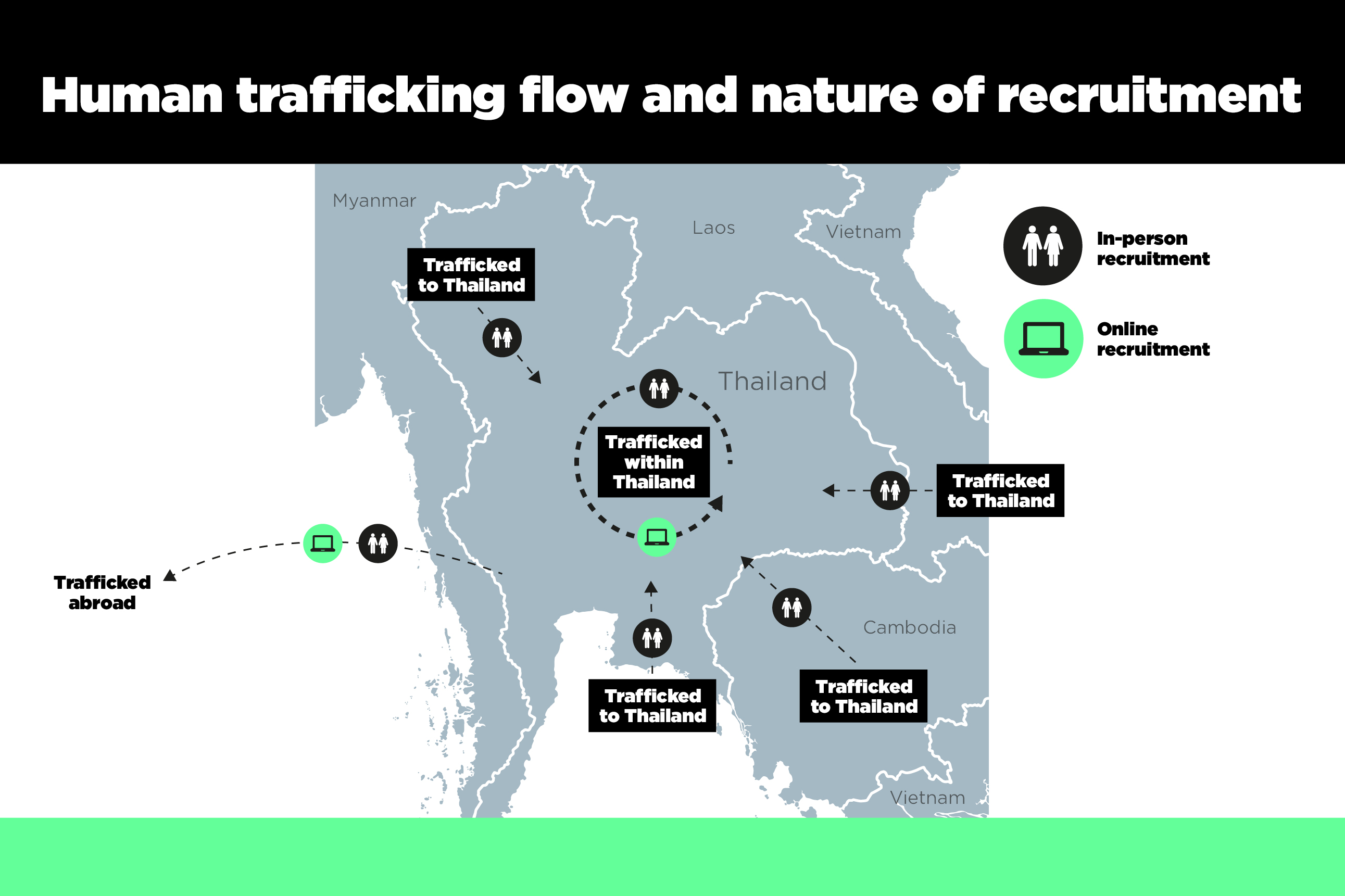
Who are you trying to reach?
First, you need to understand your audience.
From research and communication with our partners at the Ministry of Social Development and Human Security in Thailand, we knew our audience was people from lower socio-economic backgrounds who were looking to earn more money and better support their families. The region covered Thailand, Vietnam, Laos, Myanmar and Cambodia. Work opportunities often involve moving abroad, which means that these people could be vulnerable to exploitation.
While our audience were often aware of the dangers of trafficking, they also tended to believe that the benefits far outweighed the risk. Instead of trying to convince people not to migrate at all, our campaign focused on helping people to navigate the recruitment process. We knew it was vital to avoid scaremongering. Instead, the campaign gave people the knowledge they needed to challenge recruiters and stay safe.
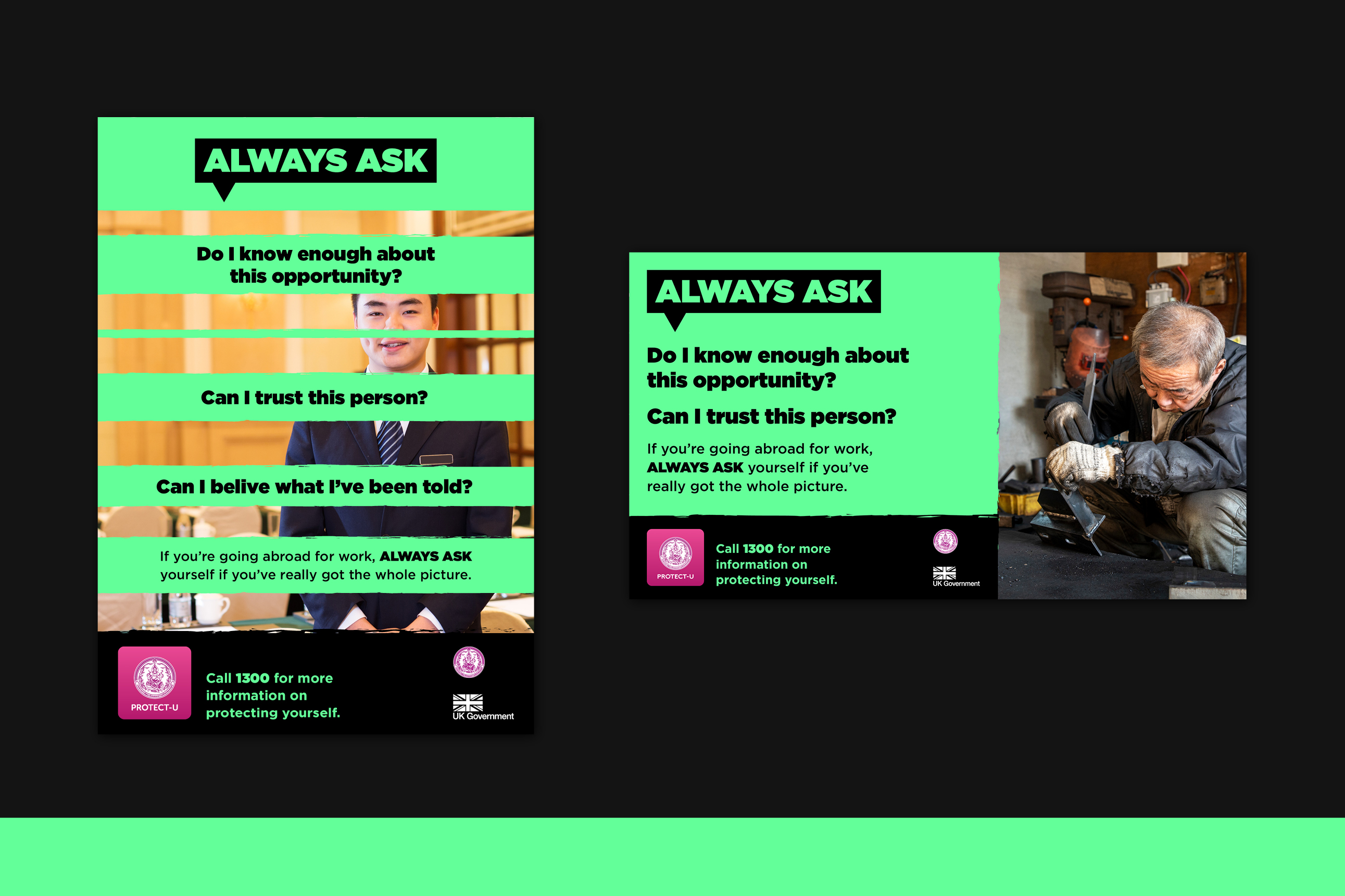
The message
In general, it’s best to keep your messaging as simple and easy to understand as possible. Refine your message to a few words. For our campaign, we wanted people to understand their rights so they would be empowered to ask questions and take control of a situation. That’s why we came up with a straightforward, memorable and positive message: always ask.
Now that we have our message, how do we make sure that its meaning will have the same impact on our audience once translated?
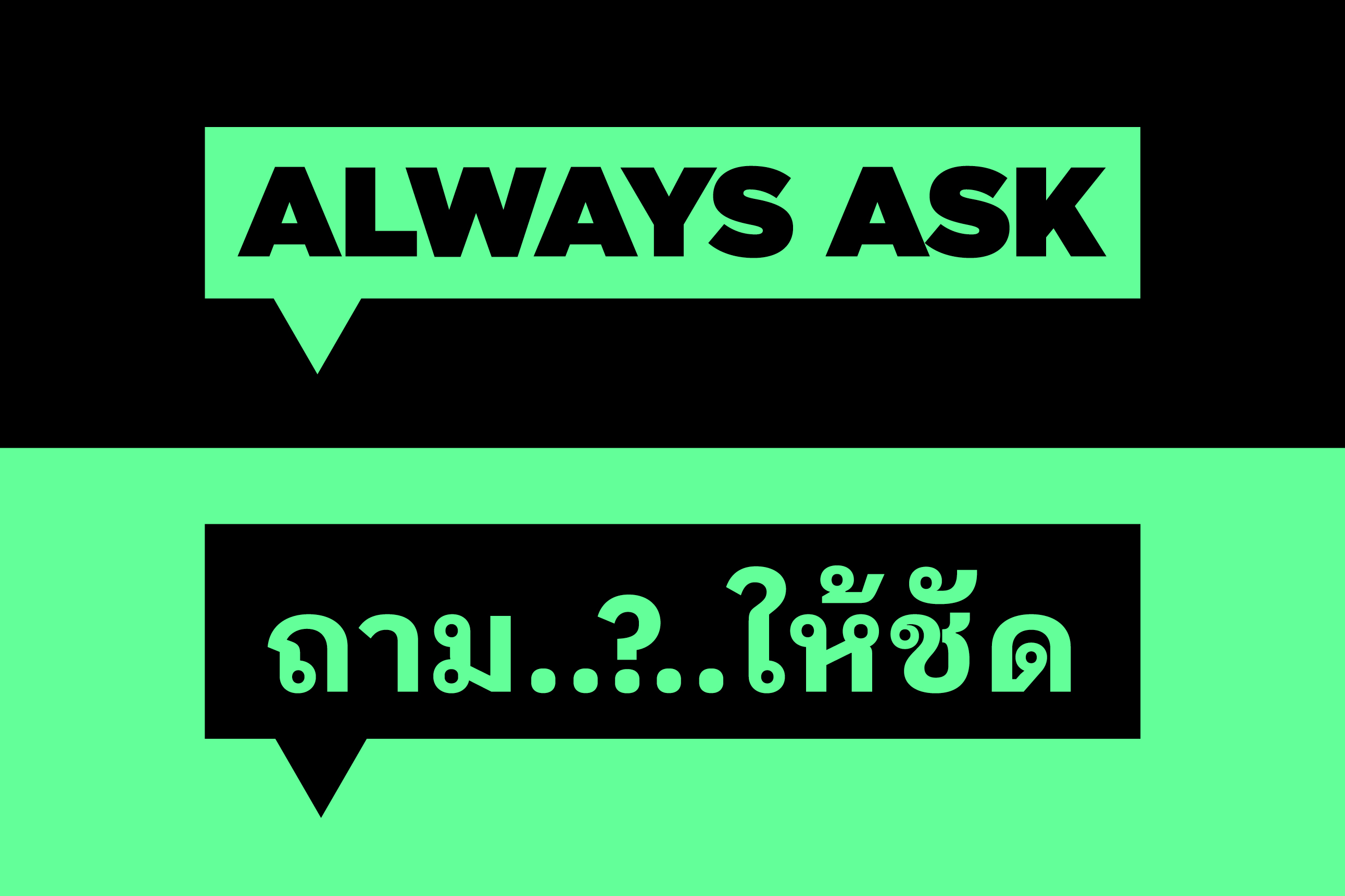
Language and culture
The most obvious barrier to any international campaign is language. Words and phrases can take on new meaning if translated literally, so it’s important to have a trusted translator who is knowledgeable about the nuances of the language in your target area.
‘Always ask’ didn’t have the same impact when translated literally, so our partners abroad helped us choose a translation that would be recognised better by those we were trying to help. In this case, ‘Always ask’ became more similar to 'Please check' in Thai.
We also had to consider that questions are formed differently in Thai. Unlike in English, question marks are not used at the end of sentences. Instead, questions are formed using a phrase similar to ‘is that right?’ in English.
This was important for us because our campaign gave a series of example questions intended to encourage people at risk of being trafficked to probe for more information.
Beyond language, there are a number of different elements you need to understand when creating an international campaign, including:
- colour – certain colours might have different impacts or meanings in different cultures
- logo – choose an image and branding that is recognisable to the local population
- photography – it may seem obvious, but using photos that accurately reflect the people and location is vital
- how all these elements will help the audience understand and remember your message
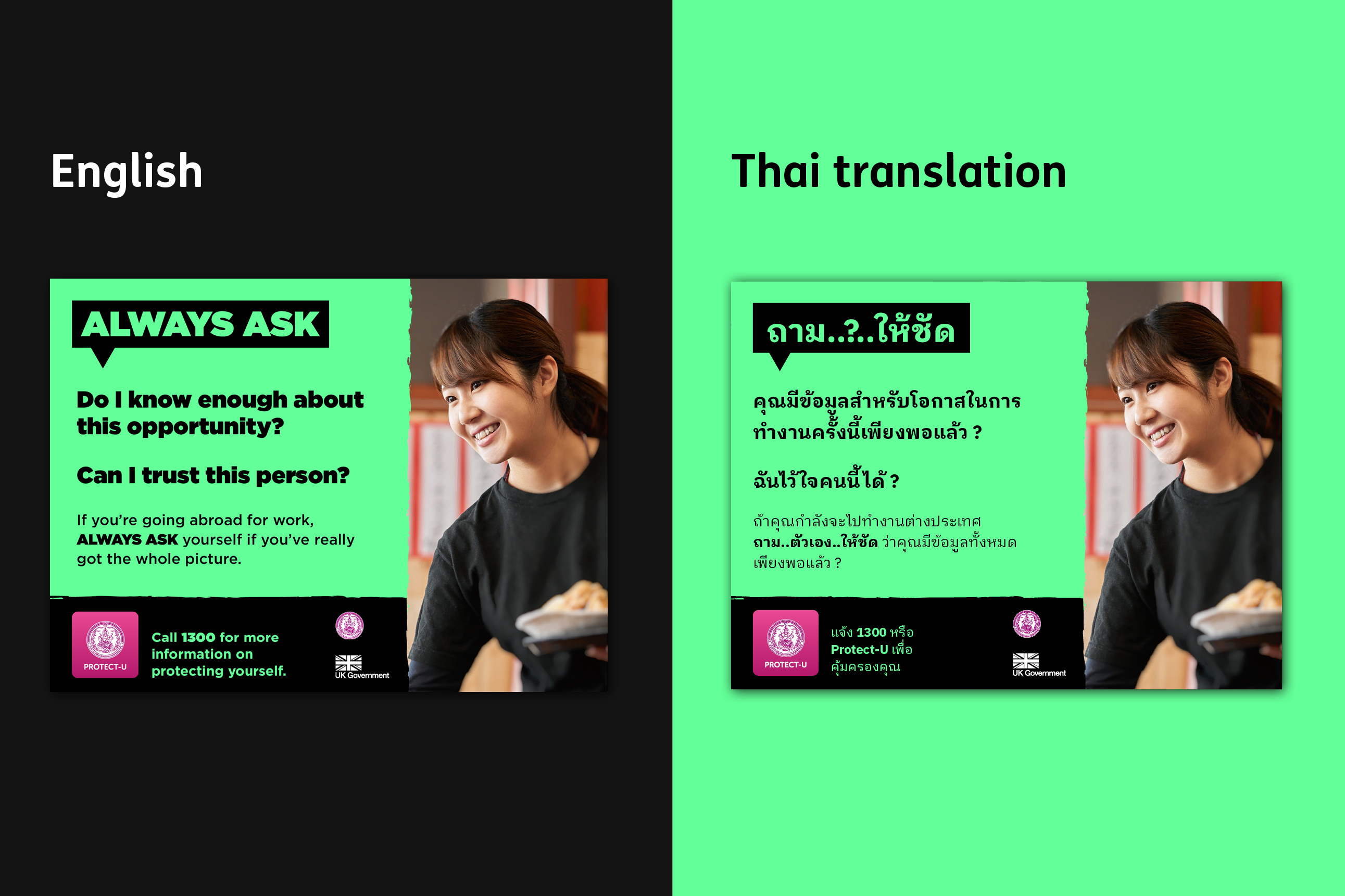
Spreading the message
The internet is often the most effective way to spread a message. It’s fairly easy to use online analytics tools to identify what social media channels and websites are popular from region to region. But when working with a target audience who are on the move and may not have access to a phone or wifi, you may need to think of other ways to reach them.
Ask yourself, where are your audience most likely going to see your message? In our case, our partners helped us identify places with a high footfall of our target audience. This covered train stations, seaports and airports. Bangkok was the location where many trafficked people started their journey.
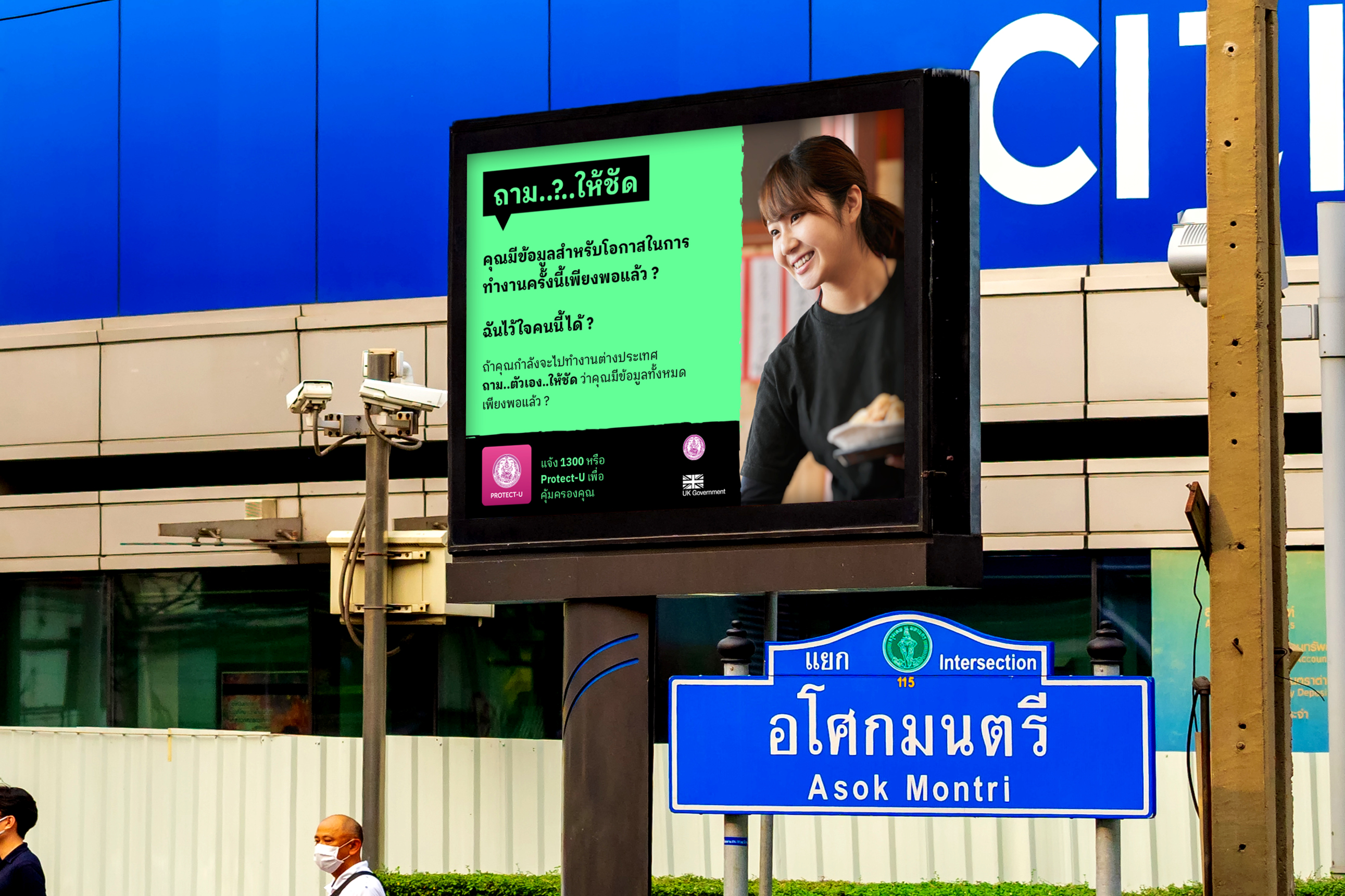
Working with partners
Working with partners abroad to achieve a common goal is rewarding, but creating a campaign across time zones offers its own unique challenges that require time and research. Building a strong rapport with international stakeholders and always thinking about how the message will land with the audience is essential to success.
If you’d like to know more about Design102 or you’ve got a project we can help with, just drop us a line at hello@design102.co.uk
For regular Design102 updates ...